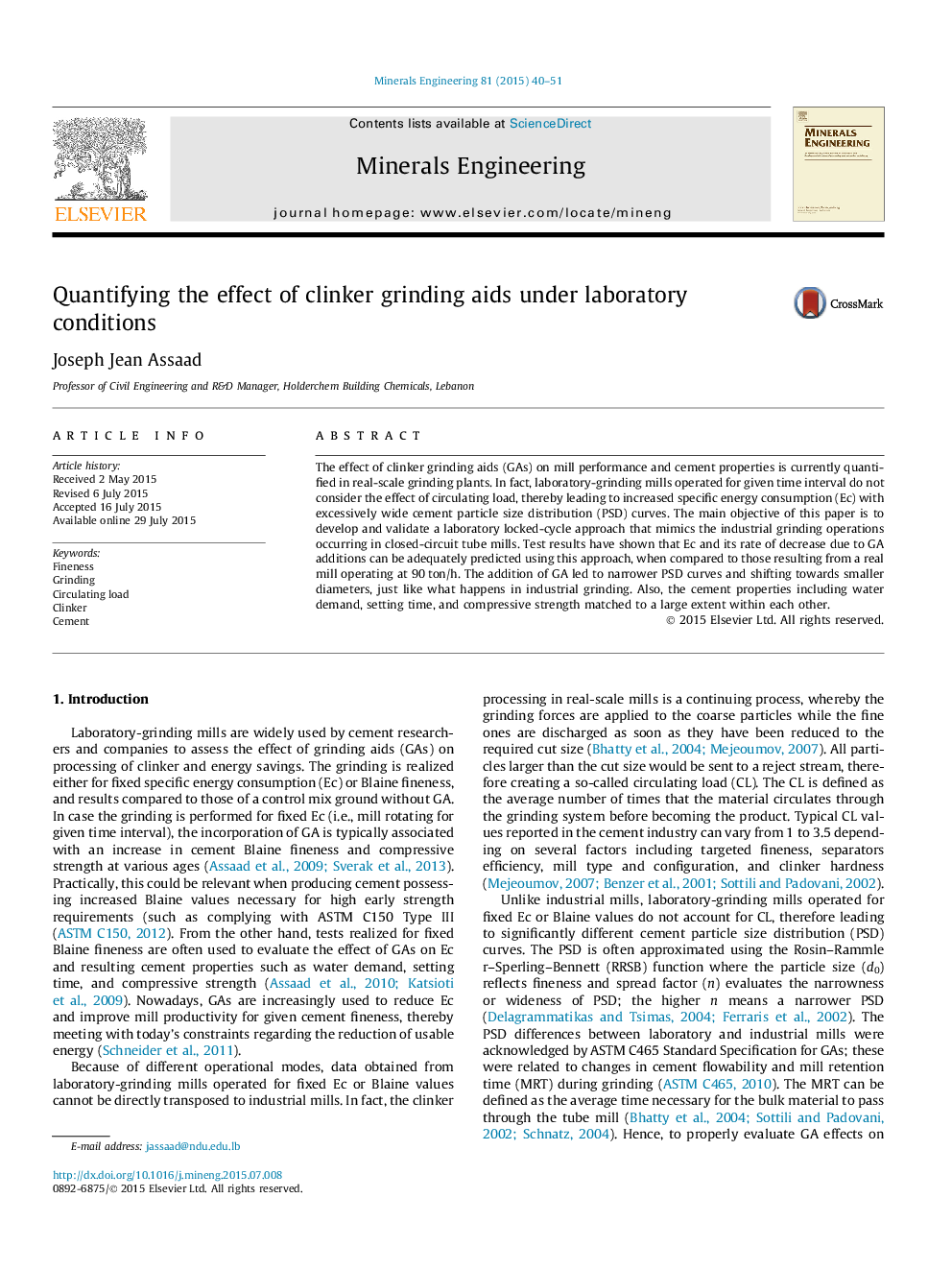| Article ID | Journal | Published Year | Pages | File Type |
|---|---|---|---|---|
| 232864 | Minerals Engineering | 2015 | 12 Pages |
•Use of laboratory locked-cycle test that mimics processing in industrial mills.•Comparison of industrial vs. laboratory clinker grinding.•Effect of grinding method on cement fineness characteristics (Blaine and PSD).•Effect of cement PSD on water demand, setting, and compressive strength.
The effect of clinker grinding aids (GAs) on mill performance and cement properties is currently quantified in real-scale grinding plants. In fact, laboratory-grinding mills operated for given time interval do not consider the effect of circulating load, thereby leading to increased specific energy consumption (Ec) with excessively wide cement particle size distribution (PSD) curves. The main objective of this paper is to develop and validate a laboratory locked-cycle approach that mimics the industrial grinding operations occurring in closed-circuit tube mills. Test results have shown that Ec and its rate of decrease due to GA additions can be adequately predicted using this approach, when compared to those resulting from a real mill operating at 90 ton/h. The addition of GA led to narrower PSD curves and shifting towards smaller diameters, just like what happens in industrial grinding. Also, the cement properties including water demand, setting time, and compressive strength matched to a large extent within each other.
